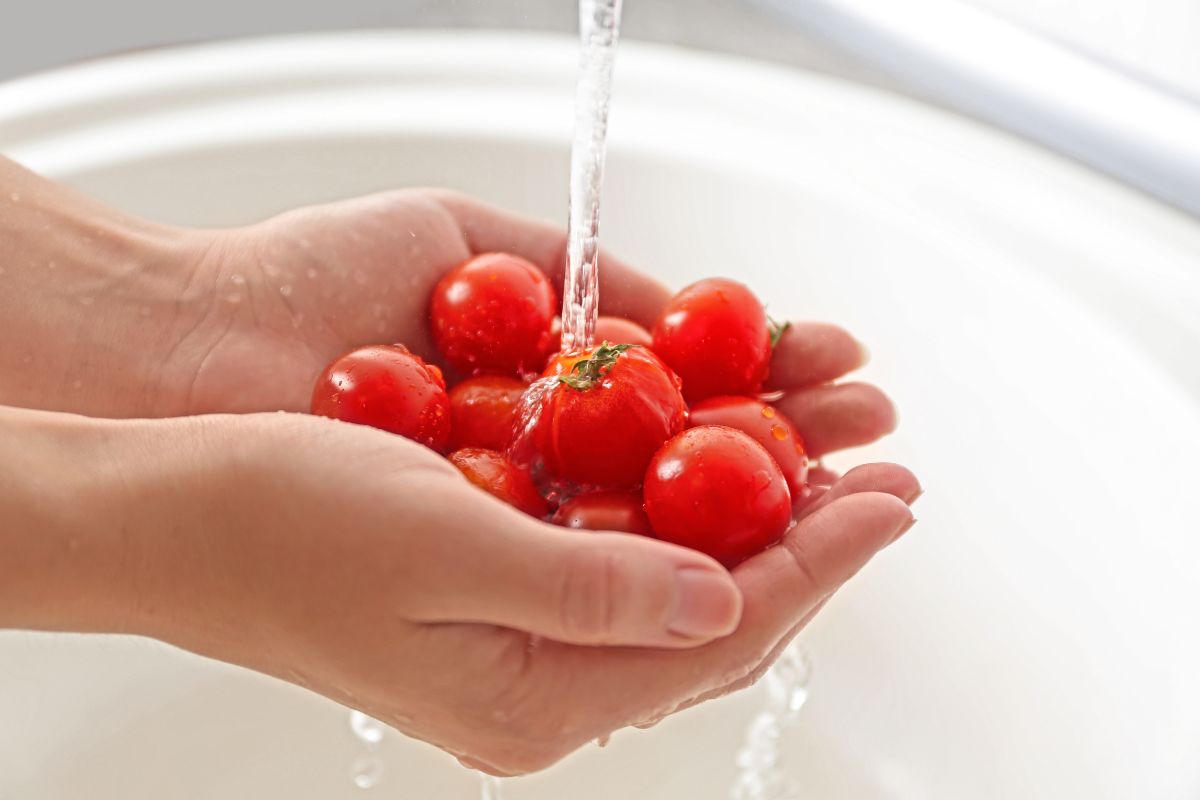Show table of content Hide table of content
Every day, you buy fruit and vegetables thinking you’re making the best choice for your health. You prefer fresh produce, sometimes organic, often local. But behind all this goodwill lurks an invisible and tenacious enemy: pesticides. Even after a simple rinse with water, these chemical residues can persist on the skin of your food. So should we give up? Absolutely not. There’s a simple, little-known but highly effective trick that could change everything… and it’s already in your kitchen.
Vinegar, an unsuspected ally against pesticides
Yes, the same vinegar you use for your salad dressings or to clean your worktop. This multi-purpose condiment also has a surprising ability to dissolve many of the pesticide residues found on fruit and vegetables. It’s an age-old trick that’s been revived by those looking for natural, simple and economical alternatives.
The principle is disconcertingly simple: simply soak your fruit and vegetables in a solution of 1 part vinegar (white or cider) to 3 parts water. The mixture can be prepared in a large bowl, a basin or even directly in your sink – provided, of course, that it is perfectly clean.
News This TikToker buys a used van and realizes it has a hidden surveillance device.
15 minutes of patience for maximum effectiveness
Once your products have been fully immersed, you need to give them time to reap the benefits of the vinegar. A 15-20 minute rest allows the acetic acid to act gently on the chemical residues, without altering the taste or texture of the food. During this time, the vinegar begins to break down the molecules of many surface pesticides, particularly those used on apples, pears, grapes, strawberries and tomatoes, some of the most heavily treated.
Unlike a simple rinse under water, which only removes a tiny fraction of the residue, this method works in depth. And yet it’s non-aggressive: there’s no unpleasant taste or smell left after the treatment.
The action that changes everything: brushing
Soaking fruit is good. Brushing them afterwards is even better. Once the soaking time is up, take a small brush with soft bristles – a dedicated vegetable brush or even a soft toothbrush reserved for this purpose. Gently scrub each piece of fruit and vegetable under clear water. Pay particular attention to any rough spots, cracks or areas close to the stems, which are often more exposed.
Which foods does this method work for?
Not all fruit and vegetables require the same level of vigilance. This method is particularly recommended for those you eat with the skin: apples, pears, grapes, cherries, strawberries, tomatoes, cucumbers, courgettes, carrots, etc. Salad or spinach leaves can also benefit, provided they are handled gently during soaking.
On the other hand, for foods that you peel systematically (such as bananas, avocados or onions), there is less benefit. But there’s nothing to stop you from soaking them too, especially if you’re handling their skins before cutting them up.
Why not make do with water?
Many consumers mistakenly think that a good rinse with water is enough. Unfortunately, water alone does not dissolve the hydrophobic chemical residues present on many fruits. These substances are designed to withstand rain… and therefore tap water. Vinegar, thanks to its slight acidity, acts as a natural solvent, without any danger to health. And unlike some commercial products designed to clean fruit and vegetables, it is non-toxic, inexpensive and already present in most homes.
An economical, ecological… And reassuring tip
In a world where food raises more and more questions and concerns, these simple gestures give consumers back a little control. There’s no need to invest in complex machinery or chemical products to clean food properly. With a little vinegar, water, a soft brush and a few minutes, you can reduce your exposure to pesticides without changing your shopping habits. What’s more, this method is environmentally friendly. It eliminates the need for packaging, detergents and specialist products that are often sold in plastic bottles. It produces no waste, generates no pollution, and costs virtually nothing.
Where does organic fit in?
It’s tempting to think that organic fruit and vegetables don’t need any treatment. It’s true that, on average, they contain fewer pesticide residues – but they can still contain them, particularly as a result of cross-contamination or the use of pesticides authorised in organic farming. Applying this method to your organic products adds a layer of safety, while respecting their nature.
News Bat wings after 50? Here’s the most effective exercise, according to a coach.


